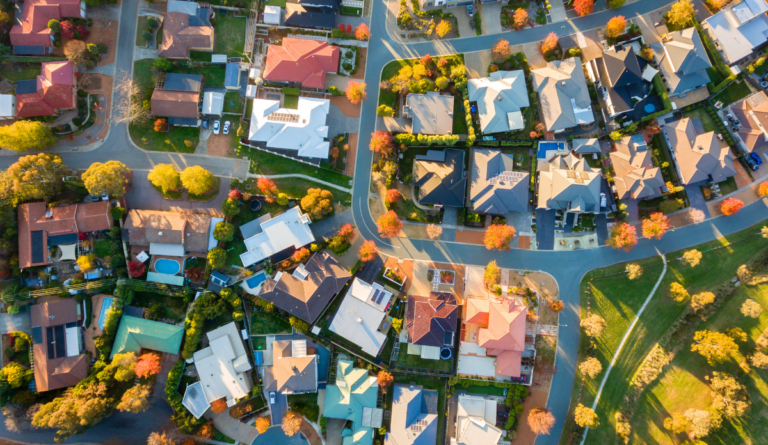Housing for a Healthier America
Participating in the housing market—not just deregulating it or providing subsidies—is essential for bridging the housing gap.

Read Time: 5 minutes
Published:
Public Health Post is pleased to announce this year’s student essay contest winner, Charles Gabel.
We appreciate all the students who took the time to enter by writing about a public health policy that should be prioritized this year. Congratulations to our winner! Here is his appeal to Speaker of the House Mike Johnson.
According to Harvard’s Joint Center for Housing Studies, over half of the people in the U.S. who rent their homes are cost-burdened. This means they spend more than 30% of their income on housing. For many Americans, especially lower income households, rent exceeds 50% of their income.
This is crushing. But why are Americans paying so much?
The short answer is that it’s a supply and demand problem, and we don’t have the supply. There simply aren’t enough places to live. Recent reporting estimates that the U.S. is 2.3 million homes short. This gap drives up costs, swallowing American wages. However, the lack of housing is more than an economic problem. It’s a health problem.
[H]igh housing costs keep Americans from investing in their health, and Americans are getting sicker.
It’s well known that housing impacts health, for good and bad. For instance, the lead from old water pipes or lead-based paint can cause neurological damage in children. A walkable neighborhood means lower rates of chronic diseases like hypertension. Local access to healthy food means lower rates of diabetes. While the range of ways that housing impacts health is daunting, there is one that Congress can address at a large scale: affordability.
High housing costs often lead to what’s called “housing instability.” This can include overcrowding, multiple moves in a year, periods of homelessness, or simply difficulty paying rent. A study of those experiencing housing instability found that they were 84% more likely to put off medical care than the rest of the population, and more than twice as likely to forgo necessary medication. They were also 43% more likely to visit an emergency room and 30% more likely to be hospitalized. Essentially, high housing costs keep Americans from investing in their health, and Americans are getting sicker.
In the short term, we need to address the high housing costs crushing the poorest Americans. The Department of Health and Human Services advocates for tenant voucher programs and housing-first programs that provide housing or put money directly in the hands of renters and homeowners. These programs have not, however, gained wide traction or made significant impact. HHS set the goal of reducing the proportion of “cost burdened” Americans from 35% to 25% by 2030, but we’ve seen no change.
I understand the criticism from fiscal conservatives who’ve already been critical of government spending: benefits like these are expensive and many state and federal budgets already run at a deficit. And I suspect many government agencies simply find voucher programs unaffordable. So, where do we find the money? We need to spend smarter, not necessarily more.
Reframing housing as a health issue provides an innovative solution. Medicaid funds could be used to subsidize housing. Arizona and Oregon are already preparing to implement this change, and Congress should watch these experiments closely. This strategy targets the funds at those with the greatest need while heading off the health effects of high housing costs, which often require expensive hospitalizations or emergency services that would get billed to Medicaid.
Allowing Medicaid to subsidize housing would be a strong first step, but it’s only a first step. This is because cash alone doesn’t address an insufficient housing supply. Any subsidies must go hand-in-hand with efforts to address the shortage itself. Research has shown that new market-rate housing units drive down costs over time. This means that an increase in the housing stock will push down prices as the supply reaches parity with the demand. We need to build more.
Participating in the housing market—not just deregulating it or providing subsidies—is essential if we want to bridge the housing gap with any urgency.
To do this, we need to tackle the key factors that caused the housing crunch in the first place. Most research blames onerous building regulations and restrictive zoning, making it difficult to build anything but expensive single-family homes. Apartment buildings, duplexes, and other multi-family structures, often called the “missing middle,” are difficult, even illegal, to build. I suggest a modest first step: deregulation.
Deregulation is often divisive politically, but zoning deregulation is something both progressives and conservatives can agree on. Eliminating certain zoning will let developers build the housing that we need. We’ve already seen zoning deregulation in Minneapolis,. And a nationwide push from Congress can rebuild our housing market for the better and help people to live healthier lives.
Targeted deregulation does have limits, though. Housing prices can take years, even decades, to adjust. In the meantime, however, some new solutions show extraordinary promise. Montgomery County, just outside D.C., has taken the reins of development with civic benefit in mind. The county’s Housing Opportunity Commission collaborated with developers and private equity to build a publicly owned apartment complex, offering a proportion of units at lower rates to households making less than the area median income. The project spurred construction when the industry was faltering. And it has proven popular enough that Montgomery County is planning more buildings. This has served as a popular model for other communities, and Atlanta is already moving forward on their own “public housing for everyone” project.
Participating in the housing market—not just deregulating it or providing subsidies—is essential if we want to bridge the housing gap with any urgency. If we don’t use a supply-side solution for a supply-and-demand problem, we’ll come up short, and Americans will get sicker.
Photo via Getty Images



